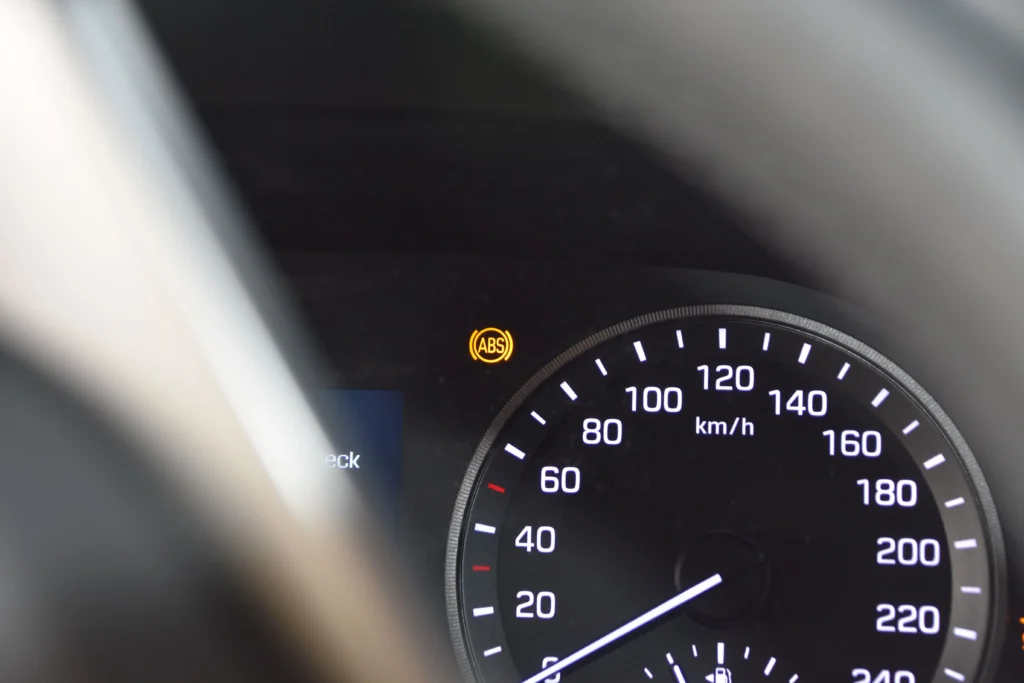Today, almost every new car includes ABS, yet many drivers remain unfamiliar with how it operates, which can be dangerous. The driver plays the key role in car safety. Various systems and devices assist, but it’s crucial to understand how these “helpers” function to avoid surprises in critical situations.
Although ABS is widely known, how many drivers really understand when and how it activates? Do they know how it reacts on different surfaces, how much it can help, and so on? For more on maintaining your car’s braking system and addressing common issues, check out our guide on brake squeaking solutions in Malta.
If ABS fails, the braking system usually behaves normally, like in a car without this system. For further information on maintaining your brakes and ensuring optimal performance, visit our brake squeaking solutions page.
What is ABS?
ABS, an electro-hydraulic system, prevents wheel lockup during braking. This typically occurs during very sharp braking or on slippery surfaces like wet asphalt, snow, or ice. ABS optimally controls braking force by reducing it as soon as it detects the risk of wheel lockup.
Why is it important?
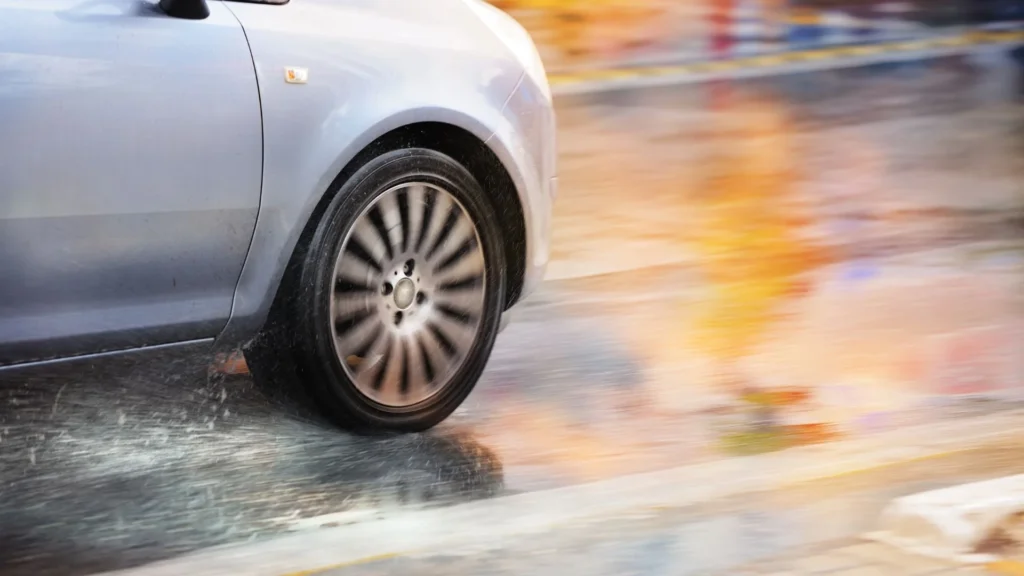
a) A locked wheel increases the vehicle’s stopping distance. For example, if all wheels lock simultaneously, the braking distance becomes much longer than that of a vehicle where the driver stops without locking the wheels.
b) If only one wheel locks, such as the front right, the car will start skidding during braking because the braking force is stronger on the left side than on the right.
c) With locked wheels, steering becomes impossible. But with ABS, even if you can’t stop before hitting an obstacle, you can still steer to avoid it while braking at full strength.
d) When the left and right sides of the car are on different surfaces, skidding and total loss of control can occur during braking. For example, you might brake and turn to avoid an oncoming car while driving on grass, gravel, or mud. The left wheels brake well on asphalt, but the right wheels struggle.
What Does the Acronym ABS Mean?
ABS stands for Antilock Braking System. It translates to a system that prevents brake lockup or, more literally, an anti-lock braking system.
Does ABS “Strengthen” the Brakes?
ABS does not increase braking power. Many modern cars feature a system that recognizes critical situations when the driver suddenly and sharply presses the brake pedal. This system automatically increases braking force to the maximum, but ABS does not perform this function. Braking force depends on how hard the driver presses the brake pedal. ABS’s sole purpose is to prevent wheel lockup.
Does ABS Shorten Stopping Distance?
No, ABS does not shorten the stopping distance. However, in most cases requiring sharp braking, the stopping distance will indeed be shorter if the car has ABS. Why? Because the driver can fully use the brakes’ potential without modulating pedal pressure in a critical moment to avoid wheel lockup, which would extend the stopping distance and potentially lead to loss of control.
How Does ABS Work?
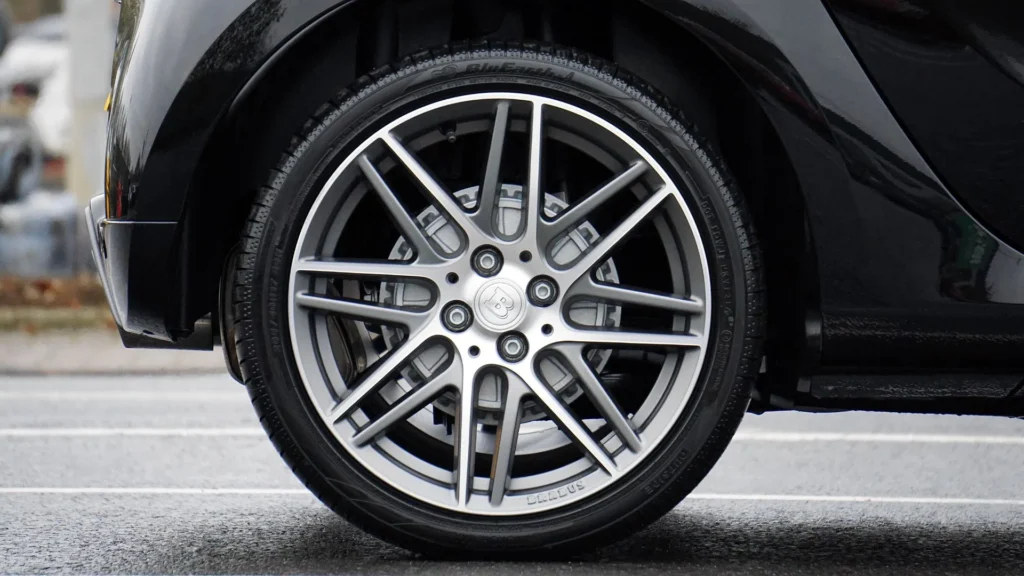
The basic components of ABS include the hydraulic control unit, control electronics (electronic control unit), valves, and wheel speed sensors.
The sensors on the wheels constantly measure their rotational speed and send this information to the electronic control unit. When the unit detects that a wheel is about to lock, meaning the brake caliper is pressing too hard on the brake disc, it immediately instructs the hydraulic unit to reduce the pressure via the valves controlling that brake.
The brake on the problematic wheel releases, allowing it to continue rotating. However, since the driver continues pressing the brake pedal hard, the pressure soon increases, and the calipers grip the disc again. If the risk of wheel lockup reappears, the process repeats.
Of course, this happens very quickly. Rather than simply modulating braking force, the brake rapidly grips and releases the disc (up to 15 times per second). This ensures braking happens right at the point where the wheel decelerates as much as possible without locking, maintaining maximum efficiency.
Thus, the wheel remains on the verge of locking but never actually locks, continuing to rotate and ensuring high braking efficiency. On very slippery surfaces, brief moments of complete wheel lockup can occur.
What if ABS Fails?
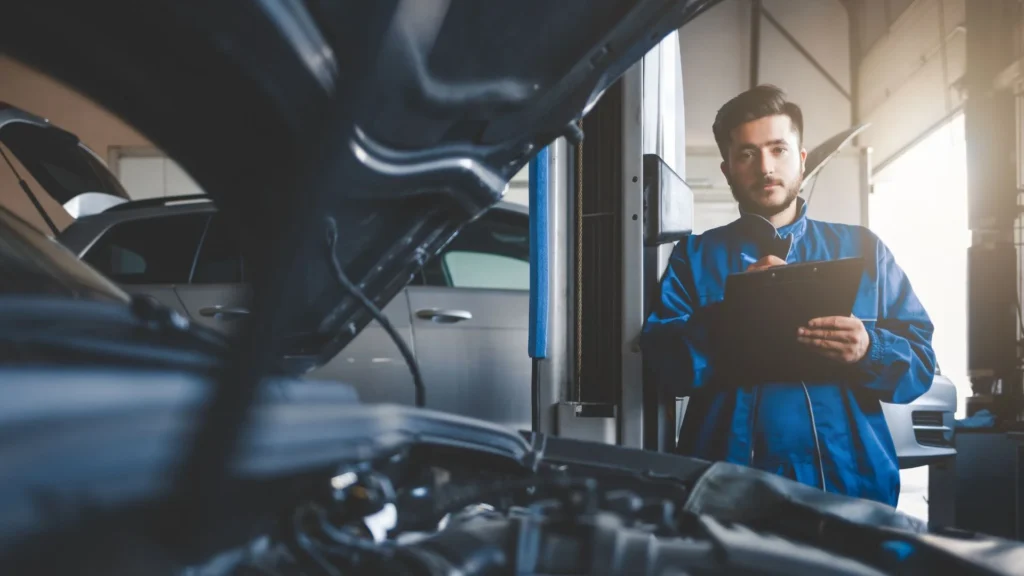
If ABS fails, the braking system usually behaves normally, like in a car without this system. However, brakes are the most important part of the car, so don’t take chances—visit a service center as soon as possible.
Why Is ABS So Noisy?
In some cars, ABS can be extremely noisy when it activates—so much so that it might scare you. Many people think something is breaking, especially when they feel the brake pedal pulsating. Don’t worry. No matter how much noise there is, everything is fine—the key is that there’s no skidding or swerving when you brake sharply, especially on slippery surfaces.
Brake Pedal Pulsation?
Brake pedal pulsation is entirely normal when ABS activates, and there’s no need to worry about it. However, some drivers might be surprised by this pulsation and ease off the brake in a critical moment. Pulsation occurs due to sudden changes in oil pressure within the braking system.
Get to Know Your ABS

We recommend finding a safe place where you can familiarize yourself with your car’s brakes. For example, find a stretch of road far from populated areas where vehicles rarely pass and practice sharp braking at various speeds. Start at the lowest speed, where the car is just crawling in second gear, and gradually increase speed, respecting speed limits and common sense.
Before sharp braking, make sure there are no other vehicles in sight! The purpose of this exercise is to improve safety, not to cause an accident.
It’s best to find a large parking lot with few (if any) vehicles.
Practice on Slippery Surfaces
The goal is to feel how ABS works, and it’s easiest to activate it on a slippery surface. Take advantage of wet asphalt after rain. Also, try sharp braking on dirt roads or gravel. This will give you invaluable experience—you’ll have a better idea of what to expect when you hit a curve where other vehicles have spread sand or mud, and you need to brake.
It’s especially important to get to know how ABS works on snow.
ABS in Snow
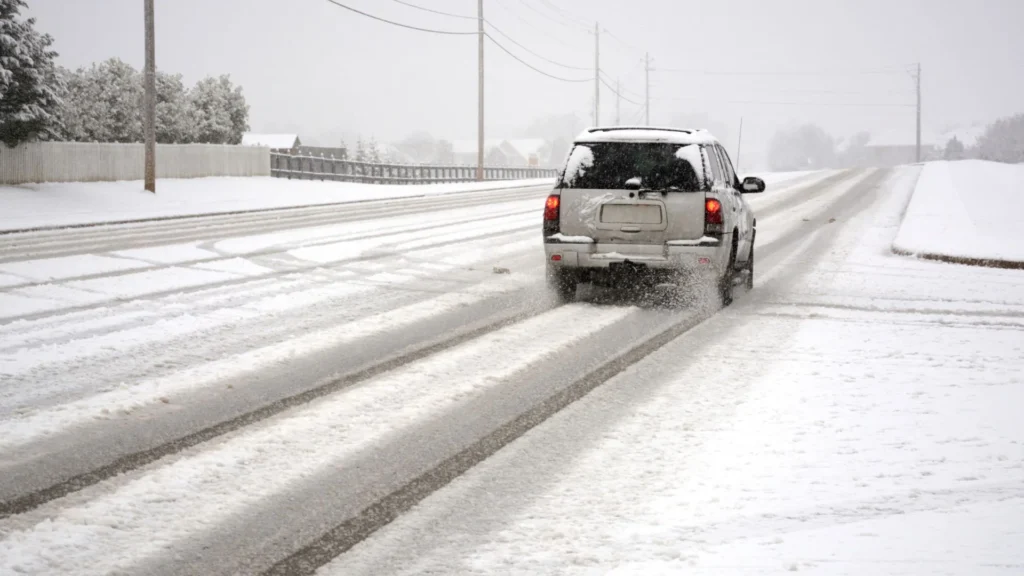
The operation of ABS on snow and ice is a very complex topic, as the ability to stop a car with this system depends on many factors:
- Temperature (affecting the characteristics of snow and ice—e.g., very dry and packed snow can be driven on without issues)
- Type and quality of tires
- Surface characteristics (snow depth, snow consistency, ice covered with a thin layer of snow…)
- Vehicle speed
- Type and setting of the ABS
Therefore, any generalization is tricky. This is why we recommend getting to know your brakes and other auxiliary systems in various conditions.
Snow poses challenges because ABS detects wheel lockup and reduces braking, allowing the wheels to keep turning and preventing them from “digging” into the snow to reach a surface with more traction or to accumulate snow in front of them.
Many drivers have had such an experience and found it very traumatic. It’s especially terrifying when you’re going downhill and try to brake—it feels like you have no control over the vehicle as the brake pedal pulses, ABS “clatters,” and you’re speeding toward an intersection even though you’re pressing the middle pedal harder than ever.
Official institutions and car manufacturers have long recognized this problem but still claim that ABS significantly improves safety in winter conditions. However, they publicly warn that ABS increases stopping distance when driving on loose surfaces, such as deep snow or sand. “Deep snow” is, of course, a relative term.
ABS in some older cars could be disabled by pressing a button, like today’s ESP, but that option is practically nonexistent now. Some SUVs have so-called intelligent ABS, which can recognize problematic surfaces and adjust its response, allowing occasional short wheel lockups.
Deactivating ABS
Many drivers feel frustrated by ABS behavior in snow, especially in regions with heavy snowfall. That’s why questions about how to deactivate ABS often appear on forums. Disabling ABS is relatively easy, but we strongly advise against it.
What Does “Four-Channel” ABS Mean?
A four-channel ABS includes speed sensors on all four wheels and a separate valve for each wheel—this is now the standard in passenger vehicles. Three-channel and single-channel ABS systems exist but are only used in trucks and similar vehicles.
